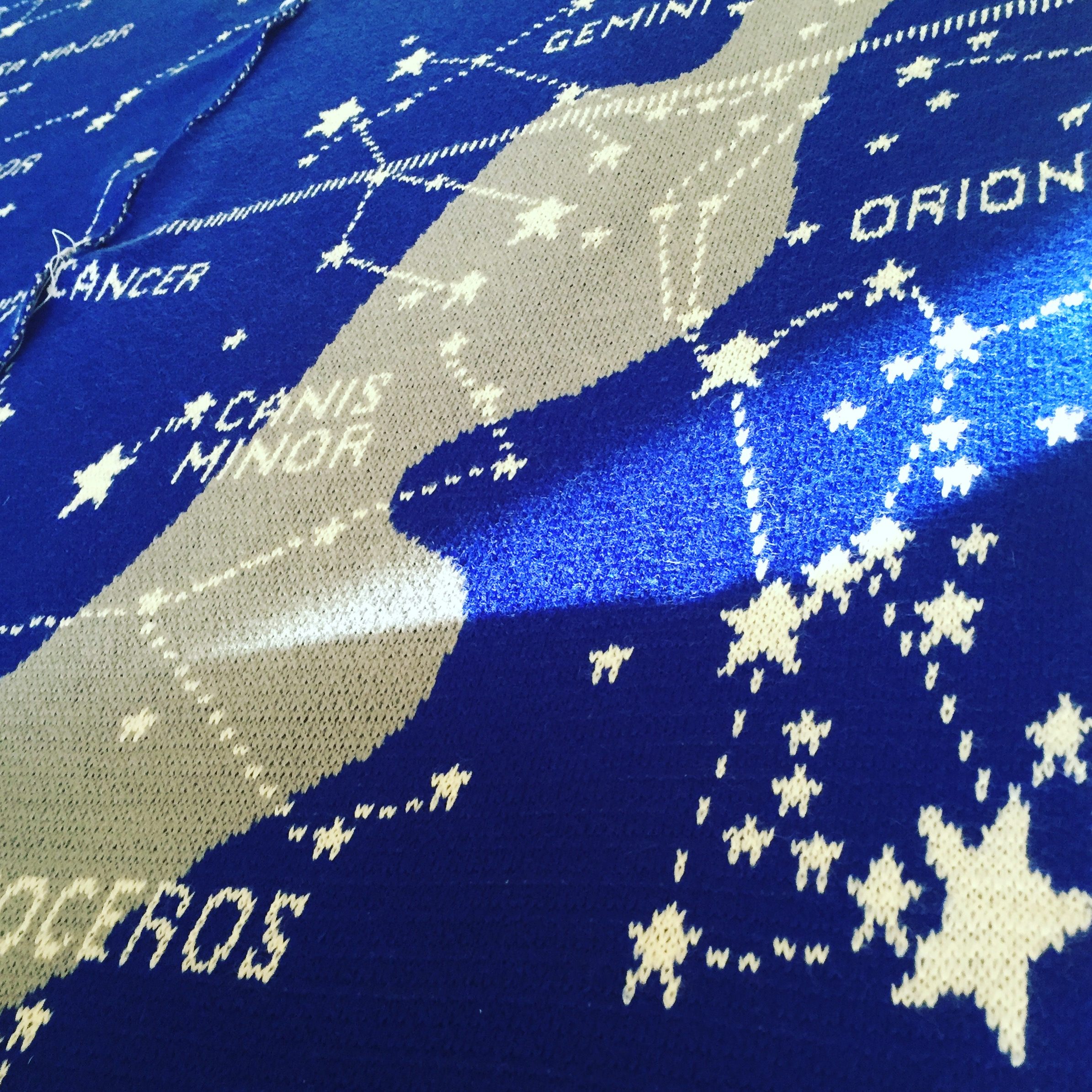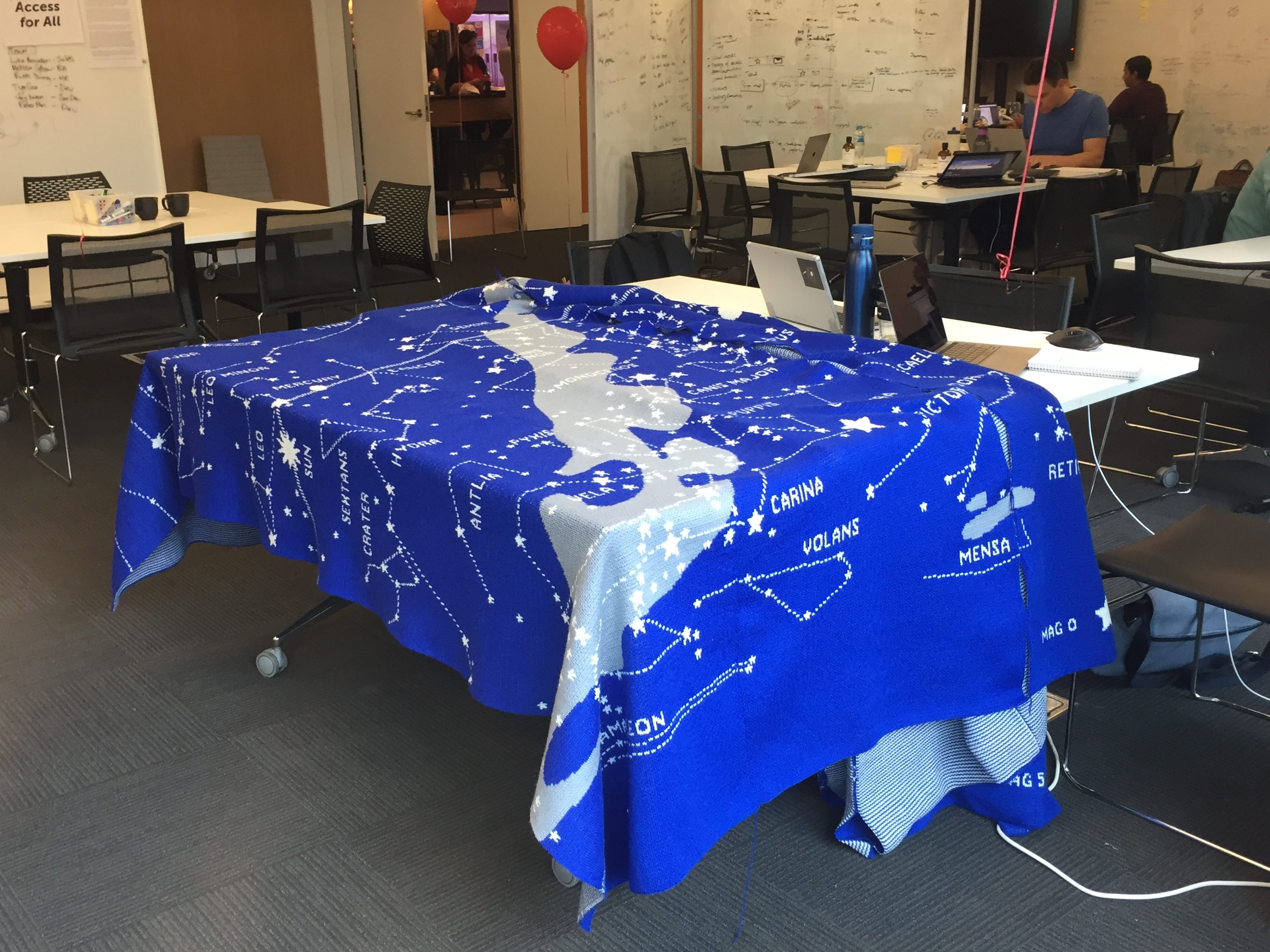Behold, a Massive Knit Map of the Cosmos
Three colors of yarn, seven panels, and all 88 constellations.

Until a few months ago, the largest thing Sarah Spencer, of Melbourne, Australia, had ever knitted was a baby blanket. But she recently decided to scale things up—astronomically. The result is a vast tapestry of the cosmos, 21 times bigger than her blankets.
Spencer is a software engineer by trade, and pulled this project off by tinkering with a domestic knitting machine from the 1980s. She grabbed star data from publicly available maps, and then designed an algorithm that could translate pixels into stitches in one of three different colors. And then, bang! “Yarn is a fuzzy material to work with,” she says, “so it wasn’t a perfect science.”

It might not be up to the engineer’s standards for precision, but it includes all 88 constellations, including Spencer’s favorite, Orion. Visible, at various times of year, from both hemispheres, the warrior has been a friendly fixture in the sky for Spencer, “like having a friend from home join me on my travels,” she says. “I was always able to find him whenever I went looking.” The white stars are scaled based on their brightness, and the tapestry includes our close neighbors, including the Sun, Moon, and visible planets. A gray band like a rippling stream represents the Milky Way.
The tapestry is roughly nine by 15 feet, and weighs about 33 pounds. The graphic spans seven separate panels, each of which the machine executed overnight—between dusk and dawn, appropriately. It then took days to stitch them together into a single skyscape.

Spencer debuted her piece at Electromagnetic Field, a camping tech-and-arts festival in the United Kingdom that had offered her a grant to work on the installation. She even arranged the planets to correspond to their locations the night of the festival’s kickoff, on August 31, 2018.
Now that the event is over, Spencer isn’t sure where the map will go next. She hopes to find a home for it that will inspire the next generation of craft- and tech-savvy space nerds. “As a woman in tech, I wanted to create something which would engage young minds in an area of STEM,” she says. It’s sure to inspire makers, too.














Follow us on Twitter to get the latest on the world's hidden wonders.
Like us on Facebook to get the latest on the world's hidden wonders.
Follow us on Twitter Like us on Facebook